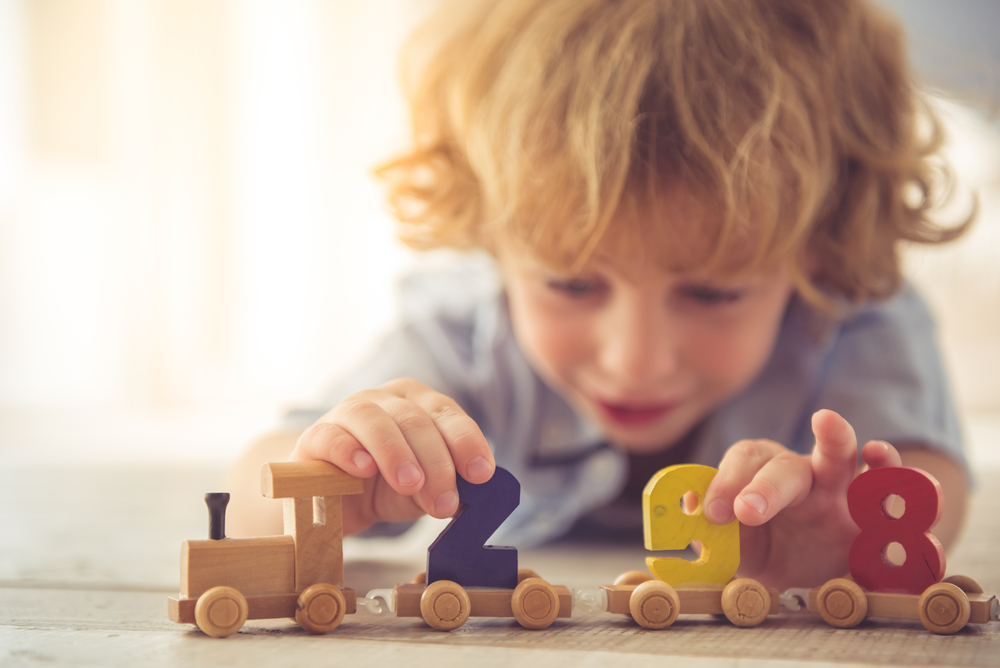
23 Sep Smart Play: Choosing The Right Toys For Your Tots
It might look like a simple cardboard box to you; but in your little one’s mind it’s a fort, a race-car, a pirate ship, a hot air balloon, even a dress-up costume!
Your child’s imagination is boundless at a young age, and playtime is such an important way of harnessing that creativity and developing key skills. Toys and games are stepping stones that shape your kids’ behaviour as they “practice growing up”. That means every toy has the potential to enrich a child’s play patterns.
At Faithful to Nature, we’re really proud of the beautifully crafted, eco-friendly toys and games we have available for your family. Here are a few key tips for parents (or grandparents, aunties and uncles) wondering how to choose the perfect playtime goodies!
QUALITY VS QUANTITY
When it comes to toys, less really is more. A smaller selection of cleverly designed, engaging toys and games win hands-down over a playroom piled high with fleeting distractions. With fewer toys, children typically learn to be more creative and resourceful, develop longer attention spans and become better at sharing. This article from Becoming Minimalist goes into greater detail about the benefits of fewer toys, as well as makes for a really interesting read.
TOYS VS TIME
As a grown-up, your own “play patterns” are important too. Remember that not even the prettiest, coolest or most engaging toy can match the value of spending quality time with your child. So switch off the TV or laptop; get down on the floor and explore the ins-and-outs of that new wooden puzzle; help your little one build the highest tower ever; or participate in that make-believe tea party. Playtime has the potential to be an amazing bonding and learning experience.
WOOD VS PLASTIC
Why are so many parents turning away from noisy gadgets and plastic contraptions, and embracing more classical “old-school” wooden toys? Sometimes, the old ways are the best…
- Durability: Plastic toys can be flimsy and break easily; this can be really frustrating for an active toddler, not to mention the sharp edges and choking hazards of broken toys. Wooden toys, on the other hand, are durable and designed to last.
- Safety & Sustainability: Plastics tend to leach harsh chemicals over time (like BPA and PVC); while wooden toys are made with natural materials, and are therefore the safer, healthier choice for your child. Wood is also more eco-friendly, provided it’s sustainably harvested.
- Simplicity: Without all the “bells and whistles” of high-tech toys, classic wooden toys are designed to enrich your little one’s playtime in a simple but sophisticated way. From simple building blocks to intricately detailed puzzles and playsets, each one is made with care and designed to help create a really rich, imaginative play experience, allowing children to develop their own creativity around what they’re doing, as opposed to being mindlessly fed imaginative detail.
There are so many toys out there made with truly safe and eco-friendly materials – from soft and cuddly organic cotton, to non-toxic plastics, to sustainably sourced bamboo finished with non-toxic paints.
Check out our new wooden toy selection here for gorgeous gift inspiration!
TOYS VS TOOLS
Toys shouldn’t serve simply as distractions or “babysitters” to keep your kids occupied. The toys you choose should be designed to help develop certain skills in a fun, creative way.
COORDINATION, BALANCE & PHYSICAL DEVELOPMENT: Wagons, walkers, spades; any toy that encourages physical activity.
SENSORY DEVELOPMENT: Musical instruments, modelling clay, rattles, bubbles, anything that stimulates the senses of touch, sight or sound (or even smell and taste).
SOCIAL DEVELOPMENT: Role-playing or make-believe toys, like doll prams, puppets, toy cars, trucks and rockets, storytelling playsets, puzzles, co-operative & competitive board games.
CREATIVE/INTELLECTUAL DEVELOPMENT: Art materials, crayons, paints or clay – anything that stimulates your child’s creative side.



No Comments